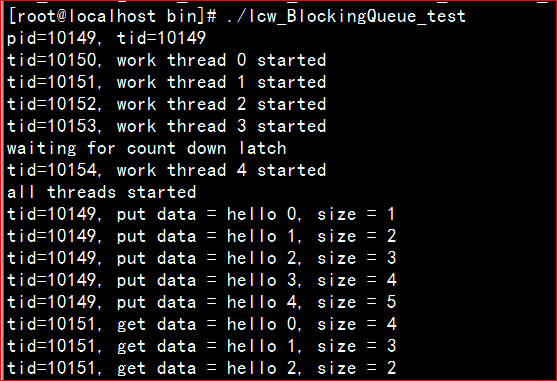muduo网络库源码学习————无界队列和有界队列
muduo库里实现了两个队列模板类:无界队列为BlockingQueue.h,有界队列为BoundedBlockingQueue.h,两个测试程序实现了生产者和消费者模型。(这里以无界队列为例,有界队列和无界的差不多)代码如下:
BlockingQueue.h
#include 测试代码有两个:
BlockingQueue_test.cc
#include threads_;//线程数组
};
int main()
{//打印进程,线程id
printf("pid=%d, tid=%d\n", ::getpid(), muduo::CurrentThread::tid());
Test t(5);//定义test类
t.run(100);
t.joinAll();
printf("number of created threads %d\n", muduo::Thread::numCreated());
}
BlockingQueue_bench.cc
#include queue_;
muduo::CountDownLatch latch_;
boost::ptr_vector threads_;
};
int main(int argc, char* argv[])
{//若参数大于1则是传入的参数,否则设为1
int threads = argc > 1 ? atoi(argv[1]) : 1;
Bench t(threads);//建立Bench对象
t.run(10000);
t.joinAll();
}

